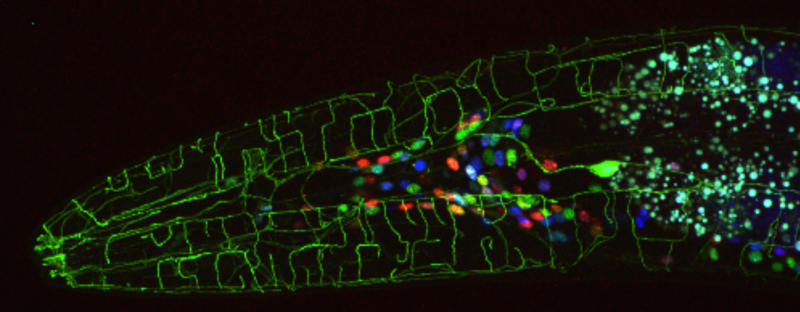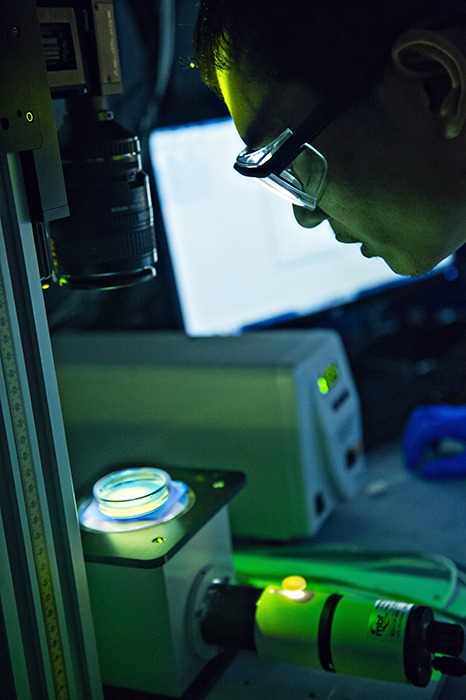The environment has a profound impact on animal behavior. The ability to sense environmental cues and to adjust behavior in response is essential for an animal’s life. Molecular sensors are a central player in sensory perception. These sensory receptors, which are expressed in sensory neurons/cells, detect sensory inputs and transduce them into electrical and/or chemical outputs to trigger behavioral responses. Sensory receptors may sense signals from the external world (exteroception), as well as the internal body of an animal (interoception). In some cases, sensory receptors are also ion channels (ionotropic) that are directly activated by sensory stimuli, leading to the excitation of sensory neurons/cells. In many other cases, sensory receptors are metabotropic and require downstream signaling molecules to transduce sensory signals. Identifying sensory receptors/channels and understanding how they detect and transduce sensory information represent a major task in sensory biology research.
C. elegans worms are a powerful genetic model for the study of various questions in neuroscience, particularly sensory neuroscience. To survive and adapt to the ever-changing environment, worms have evolved complex sensory systems. For example, worms are known to sense chemicals (e.g., odorants and tastants), touch and temperature. Recent work from our lab has greatly expanded the repertoire of sensory modalities in C. elegans. Specifically, we demonstrated that despite the lack of eyes, worms can sense light through photoreceptor neurons and engage in phototaxis behavior, enabling them to avoid lethal doses of ultraviolet light. We discovered that despite the lack of ears, worms can sense airborne sound through auditory sensory neurons and engage in phonotaxis behavior, which might help them to evade predators. We also showed that worms possess the sense of proprioception mediated by stretch-sensitive proprioceptor neurons, which allows these animals to control body posture during locomotion. Apparently, worms have evolved all of the six primary sensory modalities found in mammals. Importantly, the genes encoding sensory receptors in worms, which detect sensory stimuli, tend to be evolutionarily conserved in other species. This, together with its short generation time (~3 days) and facile genetic tools, makes C. elegans an excellent model system for identifying novel sensory receptors and sensory transduction mechanisms.
Over the years, we have identified and characterized a number of sensory receptors/channels, including, among others, a mechano-sensing channel (TRP-4/NOMPC), a light-sensing receptor (LITE-1), an alkali-sensing receptor (TMC-1), a cold-sensing receptor (GLR-3/GluK2) and so on. Current work involves identifying novel types of sensory receptors through genetic screens in C. elegans, and investigating how these sensory receptors detect and transduce different sensory cues to generate behavioral outputs.
Strikingly, many sensory receptors are evolutionarily conserved. For example, we recently reported that GluK2, a mammalian homolog of the C. elegans cold sensor GLR-3, also functions as a cold-sensing receptor and mediates cold sensation in dorsal root ganglion (DRG) neurons in mice. As such, another direction of our research is to identify novel mammalian sensory receptors and investigate how they control somatosensation, interoception and pain sensation in mammals using mouse models.




